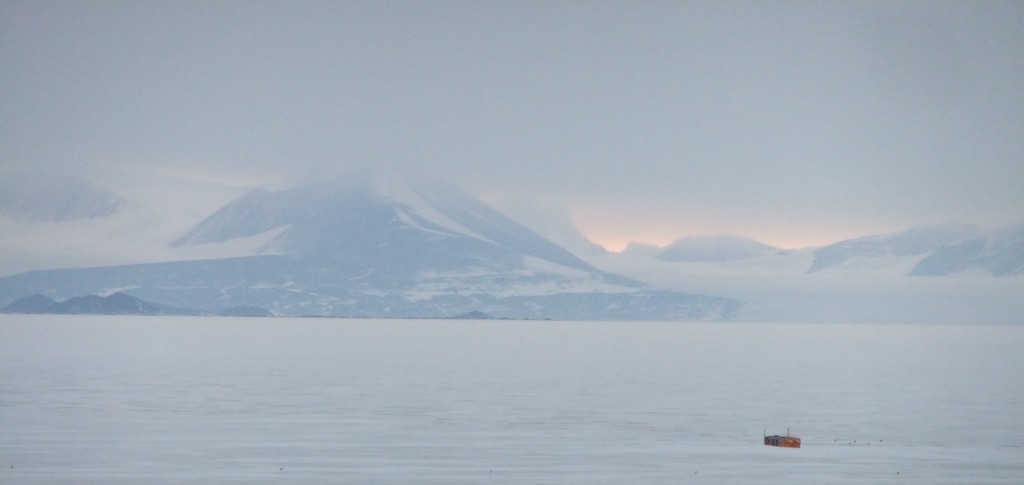McMurdo research station is on a rocky jut of Ross Island, surrounded by the ice-covered Ross Sea. Visible in the distance are the mountains and glaciers of the mainland. Upon arriving in McMurdo, us newbies looked at the mainland and were like, “what are those cliffs?” They were HUGE. I would have guessed them to be 100 m tall. And they were simply a mirage. It was a little magical declaration of how otherworldly Antarctica is.
The mirages are common here, and they are called Fata Morgana. They only form when warmer air is above colder air, which is not the normal setup. They also require something called an ‘atmospheric duct’, which I definitely had to Wikipedia. In an atmospheric duct, light waves bounce around (refract) in the higher altitude warmer air, trapped by the optical differences between the cold, dry air and the warmer, moister air. This makes kind of a guide, which directs the light forward and prevents it from dispersing upwards or downwards.
The result is a stretched, distorted image that can appear to originate well above the actual object. Sometimes, it can make boats or islands look like they’re hovering in mid-air. And they change quickly. A couple days ago, Kate said that the Fata Morgana was at its largest she’d ever seen, and she’s been to Antarctica seven times. But then, an hour later, it was completely gone.


